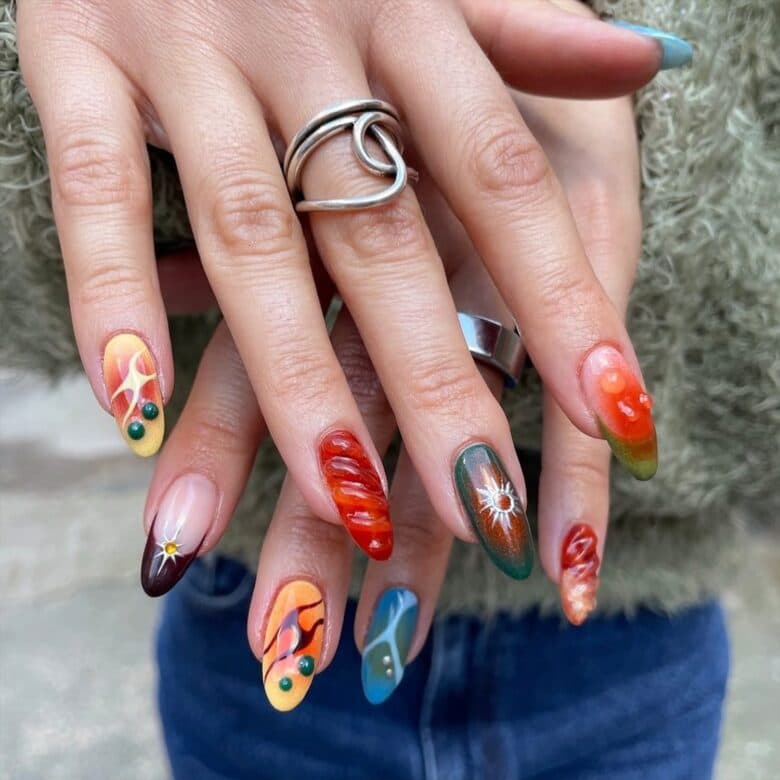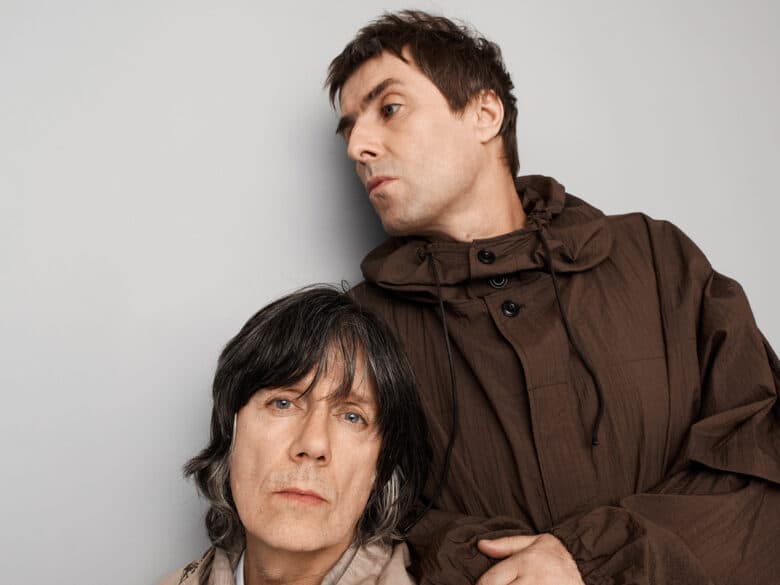Meet Malthus, the Lancashire artist offering up surreal cinematic visuals
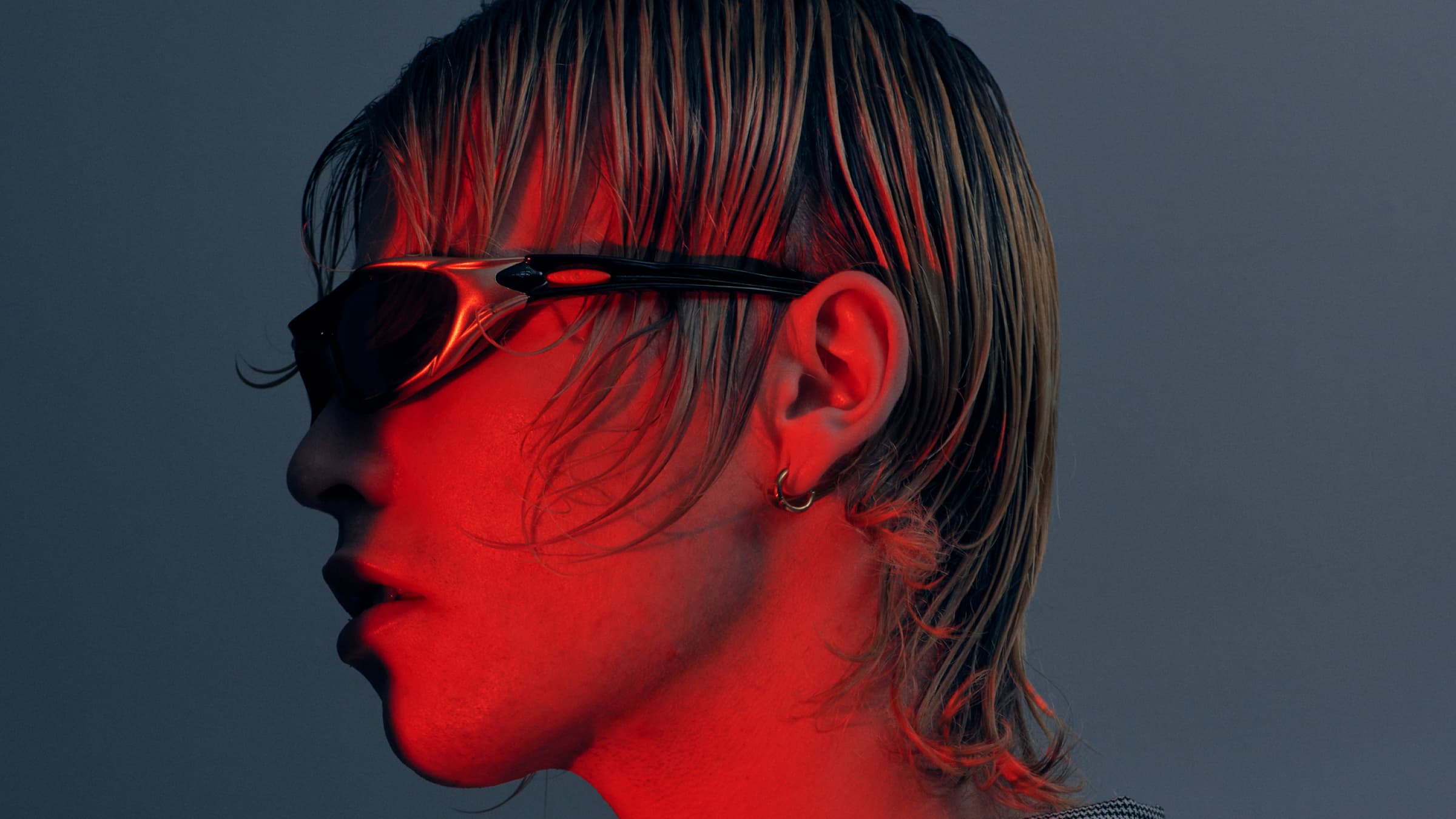
Fresh off the back of a sold-out headline London show, Lancashire musician and director Malthus has released his visual EP, CONVULSIONS, four music videos brought together as one standalone piece. Alongside friends at his label and studio, Littledoom, Malthus co-produced the music and directed and edited the films himself. So it’s not surprising that his biography is the beating heart of the project.
Growing up in a post-industrial town punctuated by concrete and metal structures, Malthus’ youth sets the scene for CONVULSIONS. Moments of euphoria and violence – central themes within his work – erupt within abandoned warehouse spaces and dark alleys. But the twisted surrealism of the EP is not only inspired by his Northern hometown. East London’s queer rave scene grounds his genre-bending music within locations and styling choices (a lot of Y2K, Diesel, and a burning coat by Sam Macer), which feel fresh off the dance floor.
The project offers up an unsettling and eerie portrayal of humanity. Sets made from cages, paired with spotlights and fish-eye lenses, act as claustrophobic filming devices, emphasising the boundaries of the frame. Meanwhile, night vision footage and handheld camera work provide an element of horror – but it’s not all dark. The energy of the music moves through upbeat tempos to ethereal chords and is paired with intelligent lighting design as we undertake a journey through shadow and light. And the dance moves, choreographed by Malthus himself, are a driving force.
You might say the visual EP reminds you of a bad trip. And you’d be right. This ability to convey the depths of human experience makes CONVULSIONS hit a nerve, even if it’s a somewhat uncomfortable one. Here, HUNGER speaks with Malthus to understand more about his visual outlook and what drove him to create the EP.
Can you talk us through the tracks and videos on the EP?
The visual EP is split into four parts. The film tracks a descent into a surreal trip through movement and lighting design. ‘Bullet To The Chest’ begins with a durational, exhausting performance in a cage. ‘These Streets Aren’t Made For Walking’ shows the slower, more chaotic slip into delusion. ‘Unhold’ is an attempt to escape, which becomes a circular spiral towards a moment of eruption. And then ‘Mercy’ is just all-out chaos!
Creating a video for each track is a lot of work; why did you decide to do this?
I’ve become a lot more invested in filmmaking over the last year, and this is really informing my music projects too. Building the music alone isn’t as satisfying as building a full 360-degree world around the project. By making these films, I could show a consistent vision across the tracks and really allow people to delve into the CONVULSIONS universe. I wanted the film’s imagery to lean into the recurring themes of euphoria, addiction, lust, horror and violence, which feature heavily in my music. It’s been really exciting finding visual ways of showing these ideas.
You directed all the videos. What was your inspiration for the series?
My references for the imagery come from 90s Americana filmography such as Requiem For A Dream and American Beauty, the hallucinogenic surrealism of contemporary directors like Gasper Noe, as well as slashers and classic horror films. I’ve always been very interested in horror as a genre – it was really all I watched growing up. Films that take place in abandoned public spaces, like Dawn Of The Dead, have influenced me a lot. There’s something very intense about these local but extremely isolated locations. The dilapidated spaces in CONVULSIONS are a nod to this. There is a lot of psychedelic euphoria that runs through the veins of the film, but it’s grounded by the visual grit that the locations provide.
The starting point for CONVULSIONS was the idea of a cage within a cage. At the time, I was thinking a lot about cycles of repetitive behaviour, and I wanted to create a visual way of representing this. In the videos, we’ve created a world that feels like a bit of a never-ending loop. The film feels like it’s happening to me, and I wanted the camera to feel like a character itself. There is a lot of interaction with the lens that goes beyond cheekily breaking the fourth wall. I didn’t want there to be a boundary between me and the audience at all.
Movement-wise, I’m interested in contortion and breaking the form of the body. It comes out in my work as a distorted sense of shape and primitive, animalistic movement. I like to create shapes and creatures that don’t exist anywhere else, the kind of monsters you might expect to see in a sequel of Human Centipede. This is paired with a pretty overt glorification of violence. I’m a very passive person, so exploring violence within film work is almost a voyeuristic experience for me. It’s something I’ve experienced a lot in my life, whether violence towards myself or towards people close to me, so it comes out as a kind of dissociated primitivism in my movement work.
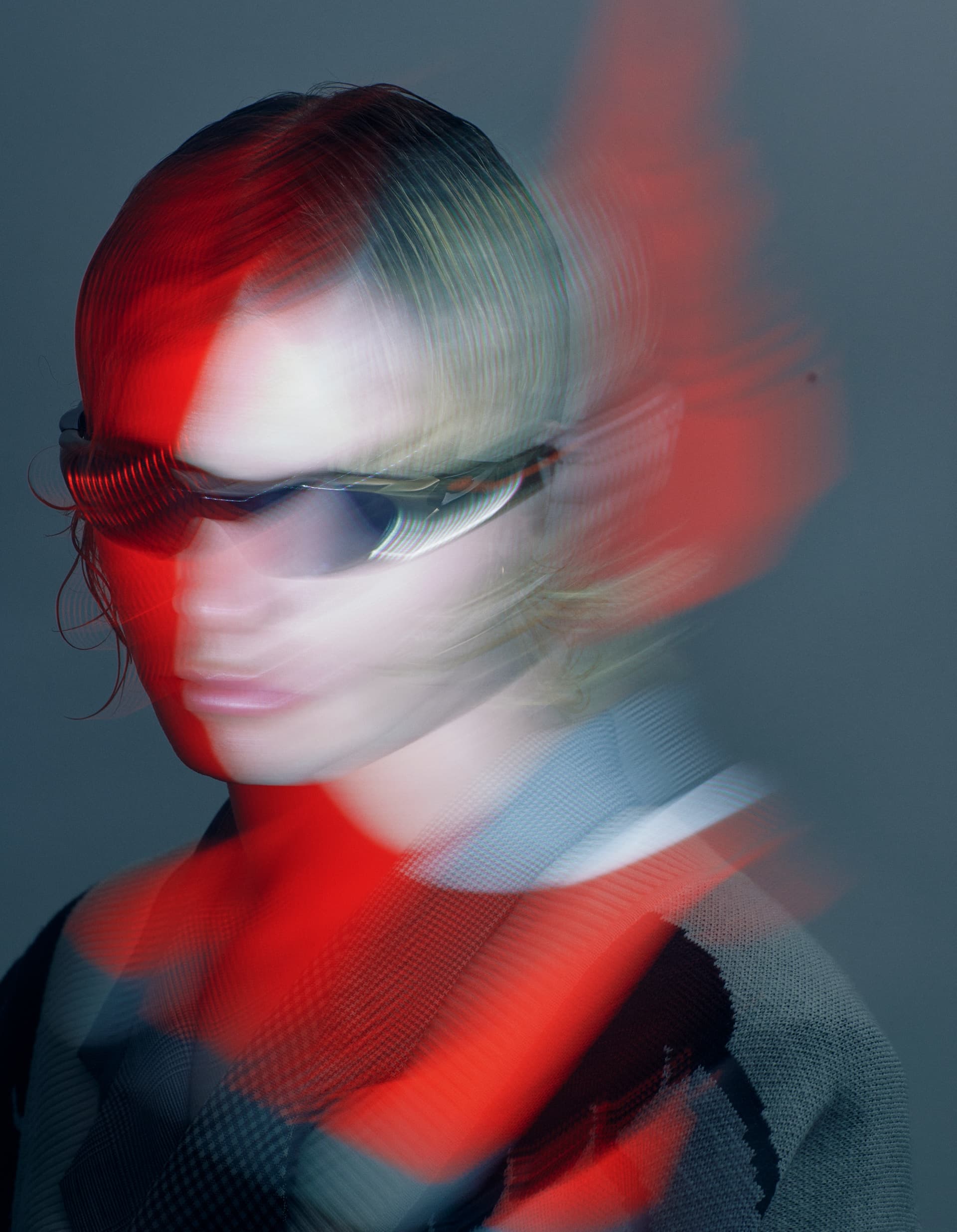
Dance and movement features in a lot of your work, did you ever train as a dancer?
Never. I was just very lucky to meet dancers who were open to helping me try new things. Most of my movement work has just come from messing around in a studio on my own and filming it to see what works. Working with Emma Belabed, Alistair Wroe, Ethan Jacobs, Myles Mansfield and Zhuo Chen was a really beautiful experience for me because it was only the second time I’d directed a bigger cast. I honestly loved this process.
I think for me it’s less about anything to do with technique, or even necessarily dancing, and more just about creating impactful imagery through surreal forms. I actually enjoy directing movement a lot more than I enjoy dancing myself, and I don’t really create longform movement pieces. Dimitris Papaioannou was really the core inspiration for adopting this approach and for feeling confident in my ability to execute it without dance training. It’s really similar to how I approach vocals, actually. It’s way less about trying to nail a technique and more just about conveying a mood or emotion, whether it’s through singing or rapping or choral arrangements.
Can you talk us through a few of your major creative decisions for the visual EP?
There is a repeating motif of different lifts used to create box-like rooms throughout the film. It ties into this idea of spaces becoming like cages, and the cyclicality of repetitive behaviour. I explore a thematic ‘loss of self’ in a lot of my work, and these cages act as containers for the different “selves” that come to light under the pressure of exhaustion and fatigue. I wanted to carry the metal walls of the confined spaces into the cages, so we used scaffolding and industrial fencing to build them. We shot in industrial parks around London’s docklands, and in UglyDuck’s unused warehouse garage. It created such a textural coldness to the film and creating movement in those spaces was a really interesting challenge. Filo Deportaberta helped massively with the set build and really helped to frame these weird humanoid creations so well.
In terms of production design, I really didn’t want any gloss on this project. We didn’t hire hair or makeup artists for any of the shoot days, I was feeling pretty frail at the time of shooting and it felt more natural to just lean into that feeling rather than try and paint over it. I also wanted the performance to be spontaneous and improvised – most of what I came up with movement-wise was made there and then on the day. Working with Martin Senyszak and Alex Dow as collaborators on the project was definitely a big creative choice too. Martin was able to source a lot of the high-grade distortion lenses and night-vision cameras we used to shoot the piece, and Alex’s method of colouring really allowed the grade of the film to become like a painting, with this iridescent, hallucinogenic glow.
I really lent into a more confident movement style on this project. I wanted to go against the idea that I needed to be reserved, or that I needed to look good. It was really just about trying to show emotional extremes. It presents a facade of overconfidence in this film that lends itself to a more lustful and energised delivery. It’s still a very tender record, but both the music and imagery feels more dominant than before.
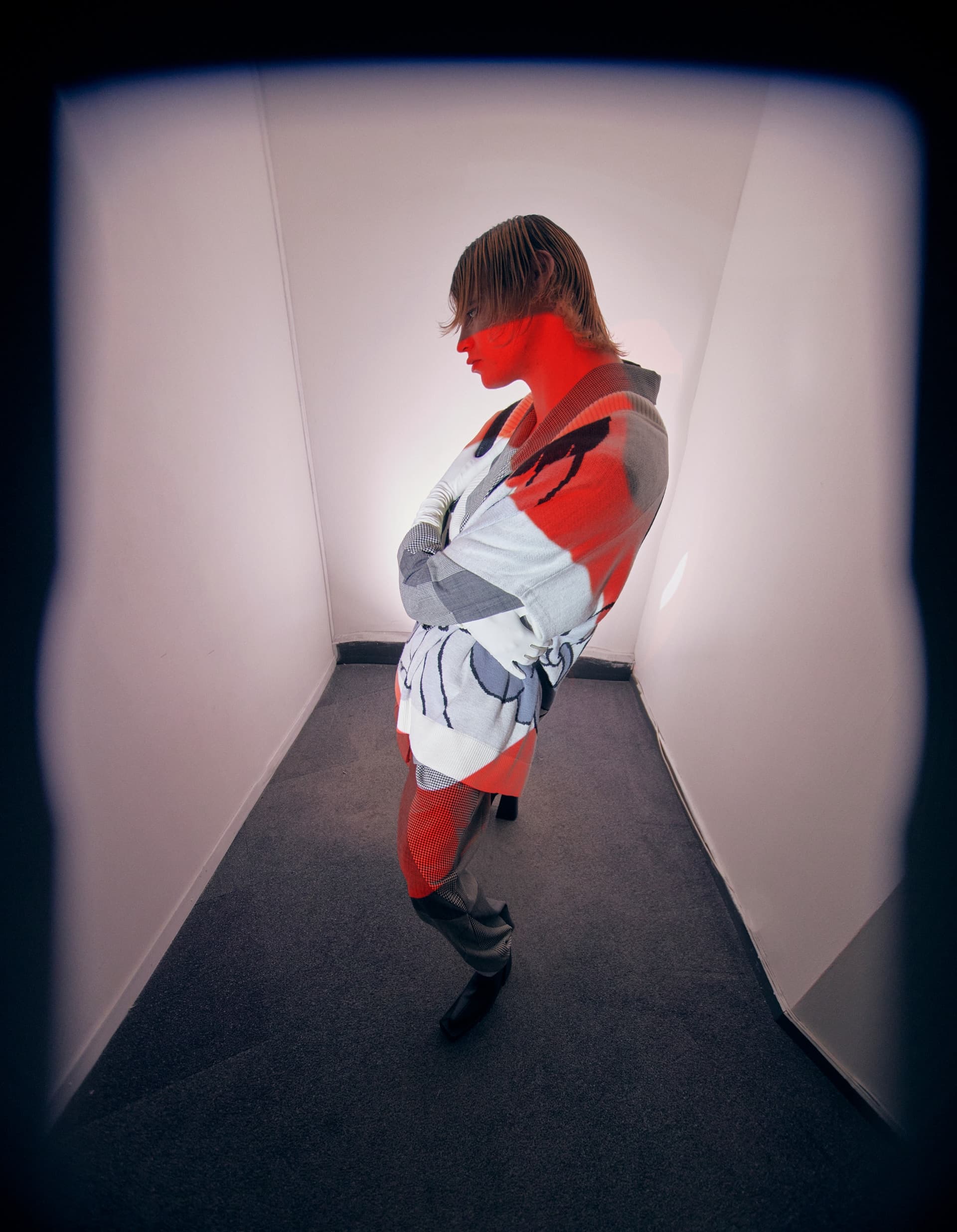
What’s next for your music and film work?
I’ll be playing my first international shows in Berlin and Paris over the next month. It’s extremely exciting to finally be here doing this. I’ve also got something really exciting in the works with FOLD in London that we will debut later this year. I’m ready to start pushing the limits on what the live elements of this EP will look like.
I’ll be doing a few more DJ gigs at festivals and clubs in and around London throughout the summer, and I’m lucky to also be working on a few exciting fashion films and shorts. We’ll be screening a new film piece that I directed and scored in London and Tokyo at the end of June. I can’t say too much right now, but I really can’t wait to put more work out there.
What other moods and genres would you like to explore in future projects?
My musical references have always been very varied – I like a lot of contemporary darkwave like Fever Ray and Amnesia Scanner, then incredible female vocalists like Kelis, Amy Winehouse, Ms Dynamite. Yeezus is one of my favourite albums ever made, mostly because of the Gesaffelstein production.
My released work sits more on the darkwave, alternative axis, but I think the next record will move closer towards dance music and touch more on euphoria and lust. I’ve had two in a row now that feel very dark, so I’m definitely ready to explore something that feels a bit sexier!
